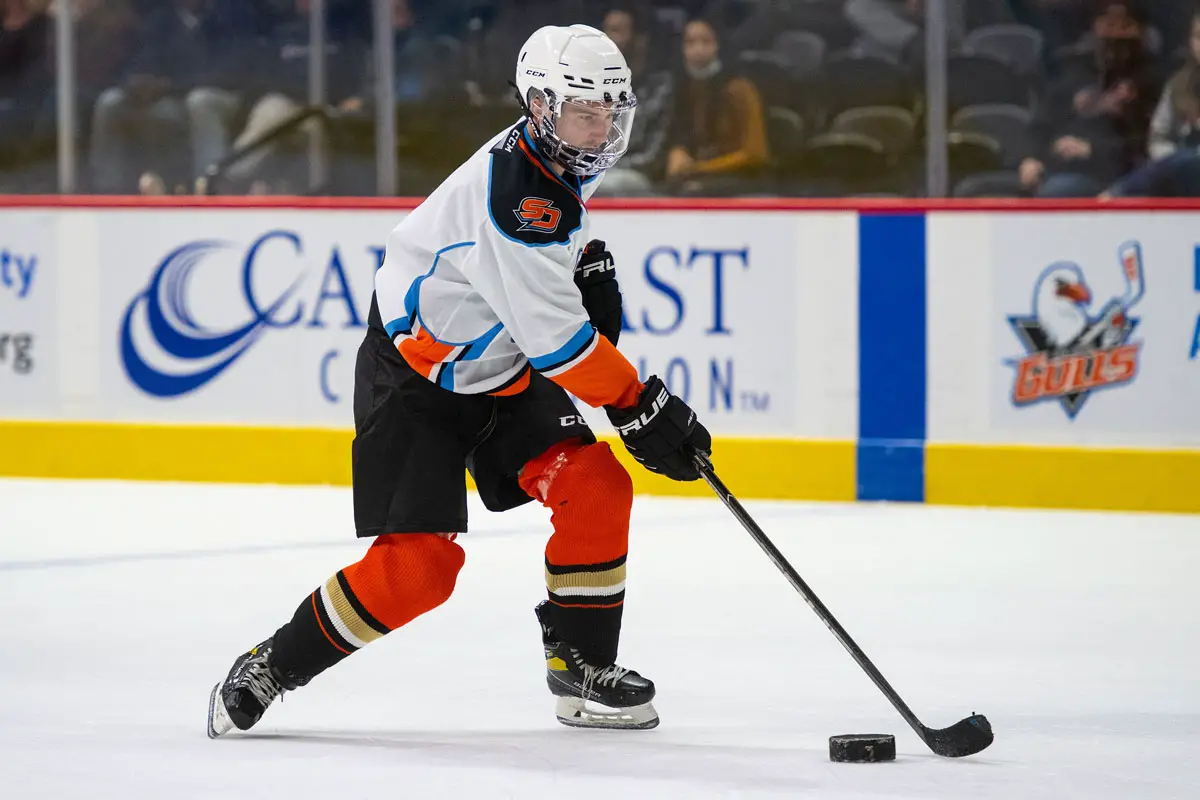SAN MARCOS — The game of ice hockey has opened new doors, experiences and friendships for a legally-blind San Marcos resident.
Blake Steinecke, a 23-year-old tech professional and member of the U.S. Blind Hockey Team, was shocked to learn his vision was getting worse during his junior year at San Marcos High School.
At 16, Steinecke enjoyed playing baseball, hockey and lacrosse, all while maintaining a grade-point average greater than 4.0. However, just weeks after his vision problems began, Steinecke was diagnosed with Leber hereditary optic neuropathy (LHON), a rare mitochondrial genetic disease causing the optic nerve to atrophy, leading to blindness.

“I got the diagnosis and knew I would lose central vision in both eyes,” Steinecke told The Coast News. “It’s just so shocking to expect something like that. I was facing this challenge in the future, and I had this initial shock.”
Once gifted with 20/15 vision (an individual is able to see something from 15 feet away that others with 20/20 vision can see from 20 feet away), Steinecke now has 20/800 vision. (For reference, an individual is legally blind if their central vision is 20/200, several magnitudes stronger than 20/800 vision.)
Despite a life-changing diagnosis that caused him to question everything from future employment to dating, Steinecke forged a successful career as a student-athlete. Leaning on his faith, Steinecke earned his high school diploma — among the top students in his class — and graduated magna cum laude from Cal State University San Marcos.
Today, he works for the tech start-up Clusive, which emphasizes computer and tech accessibility for the visually impaired. Steinecke also has a YouTube channel to empower the blind community and is an amateur photographer.

“My dreams are different, the way I interact with this world (is different) and there’s this new normal,” Steinecke said. “I’m in this for life, so accepting all that took me years. I found a lot of success and it was incredibly challenging. What helped a lot was having people who believed in me.”
And dating? Steinecke met Amanda Bauer, whose maiden name is the same as the hockey equipment company, and the couple was married last year.
Dreams on ice
While successfully navigating his academic and professional careers, Steinecke never gave up on sports.
As a member of the U.S. Blind Hockey team (a partner of the USA Hockey program), Steinecke trains twice weekly at Icetown Carlsbad, deftly navigating ice-skating drills and maneuvers, whipping shots into the net and improving his overall game.
Steinecke, who plays forward, broke the ice on his sports career after participating in a blind hockey event in San Jose, which landed him an opportunity to play with the U.S. national team.

Blind hockey has some significant differences from traditional hockey. The puck, which is made of metal and filled with ball bearings so players can locate the puck, is significantly bigger than the sport’s traditional vulcanized rubber disc.
Players must also pass the puck at least once, signaled by an electronic whistle, before a scoring opportunity. Goalies must be completely blind, while defensemen and forwards may be legally blind. Steinecke, who is legally blind with no central vision and limited peripheral vision, can only see a nearby puck due to the contrast between the black disc on white-colored ice.
Many blind hockey players across North America, including Steinecke, hope the sport will eventually make it to the Paralympic Games.
Bill Steinecke, who has been his son’s coach for the past several years, said blind hockey is more than a game. The bond between the players has created a family-type atmosphere.
“It’s such a tight community and just being around them is infectious,” Bill Steinecke said. “For me, it was, I can’t change, so what’s next? It was a change in how I communicated with him. I’m just a big fan. Where I’ve seen him play, it’s amazing. These are things (Blake) never would’ve done if this had not happened.”



